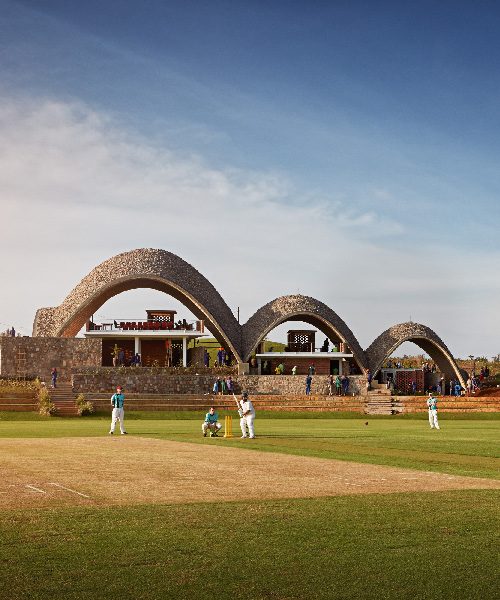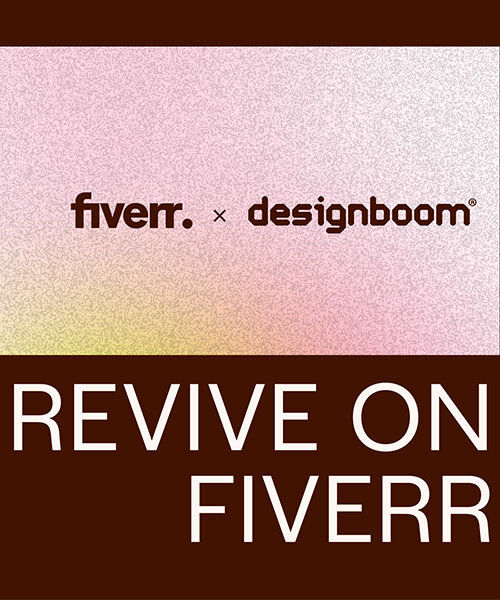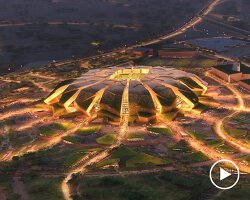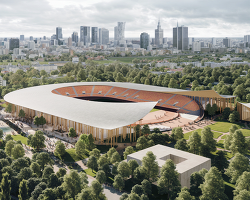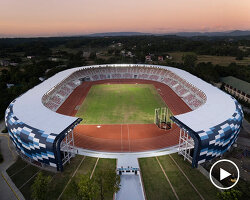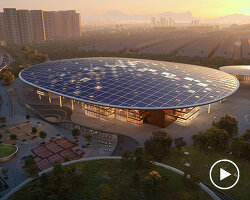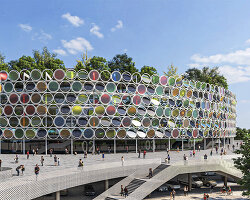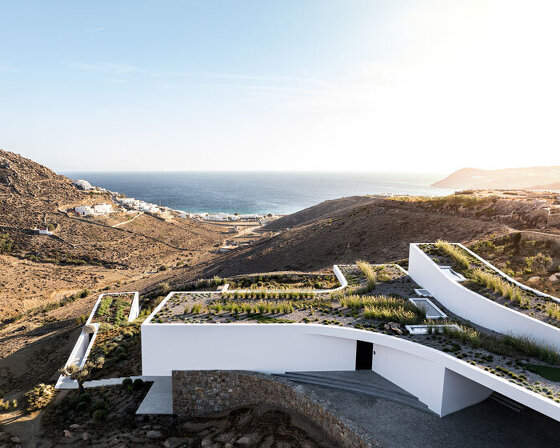this cricket pavilion for a stadium in rwanda comprises three vaults, which have been produced on site using local materials and labor. the roofline of the vaults has been designed to mimic the parabolic geometry of a bouncing ball, while evoking the country’s undulating topography. the masonry vaults are completely in compression, allowing the use of a simply layered thin shell composite of low strength tiles.
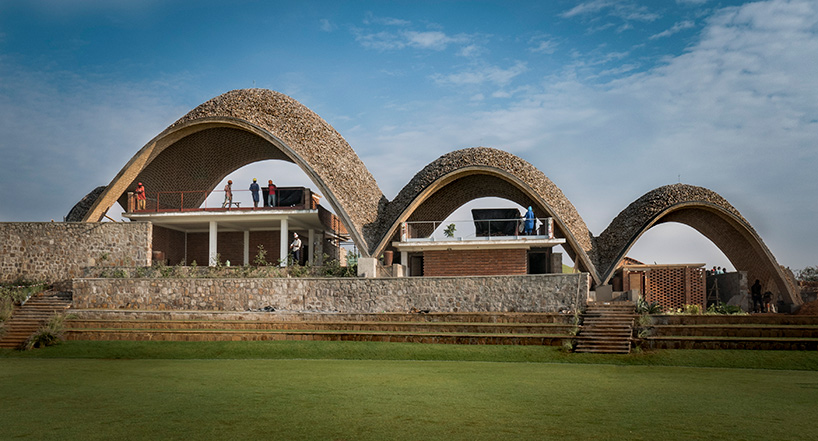
the building grows out of the cut soil banking that was formed as the pitch was leveled
image © light earth designs | (main image © jonathan gregson)
the project has been undertaken by light earth designs for the rwanda cricket stadium foundation over a five-year period. the initiative explores how rwanda can transition from an agriculture-based economy to development using local home grown labor intensive construction techniques, thereby avoiding imports, lowering carbon, and building skills and economies.
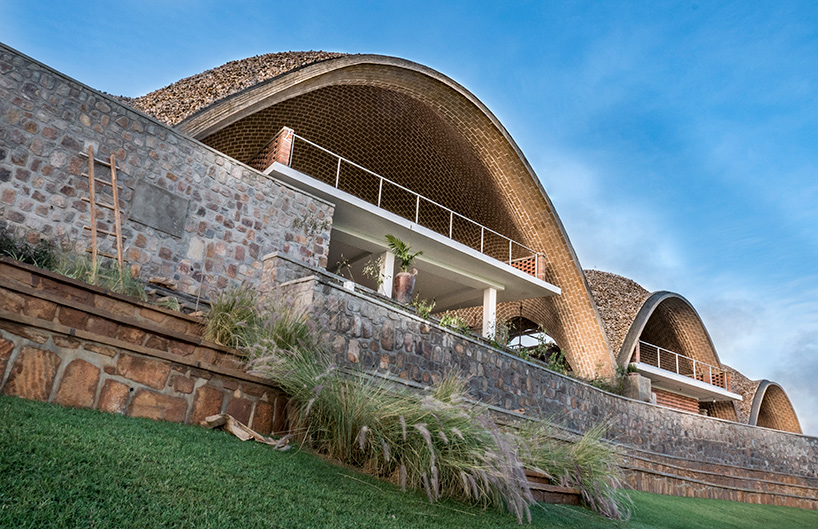
the banking creates a wonderful natural amphitheater with views to the pitch
image © light earth designs
produced on site by local workers, trained by an expert mason, the tiles are hydraulically pressed with a small addition of cement and do not require firing. they are placed on top of a temporary timber skeleton, with a geogrid — developed by research in architecture and engineering at cambridge university — added to give some seismic protection. the shells are waterproofed before being topped with locally sourced broken granite that adds both weight and stability.
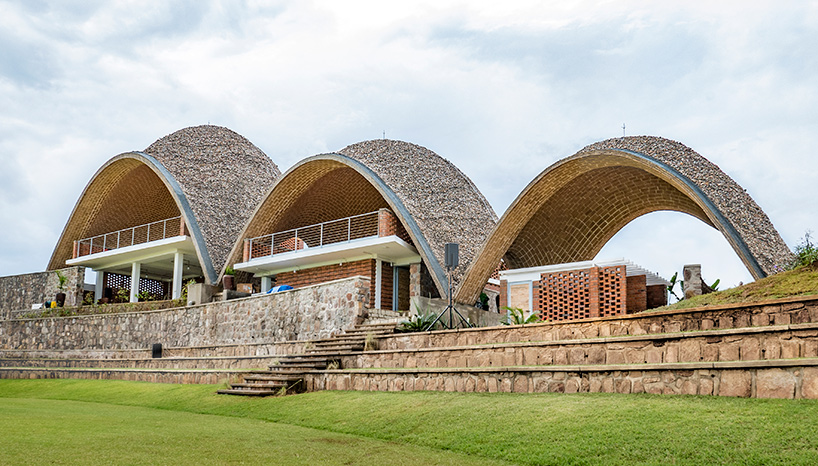
the vaults span distances of up to 16 meters
image © light earth designs
concrete plinths are inserted into the vaults, providing space for the more enclosed functions: the service areas, the changing rooms, an office, and a restaurant. above, the open mezzanines — a bar and a clubhouse — enjoy panoramic views over the pitch and the wetland valley beyond. low carbon bricks are used to delineate space, while allowing light and air to circulate across the site.
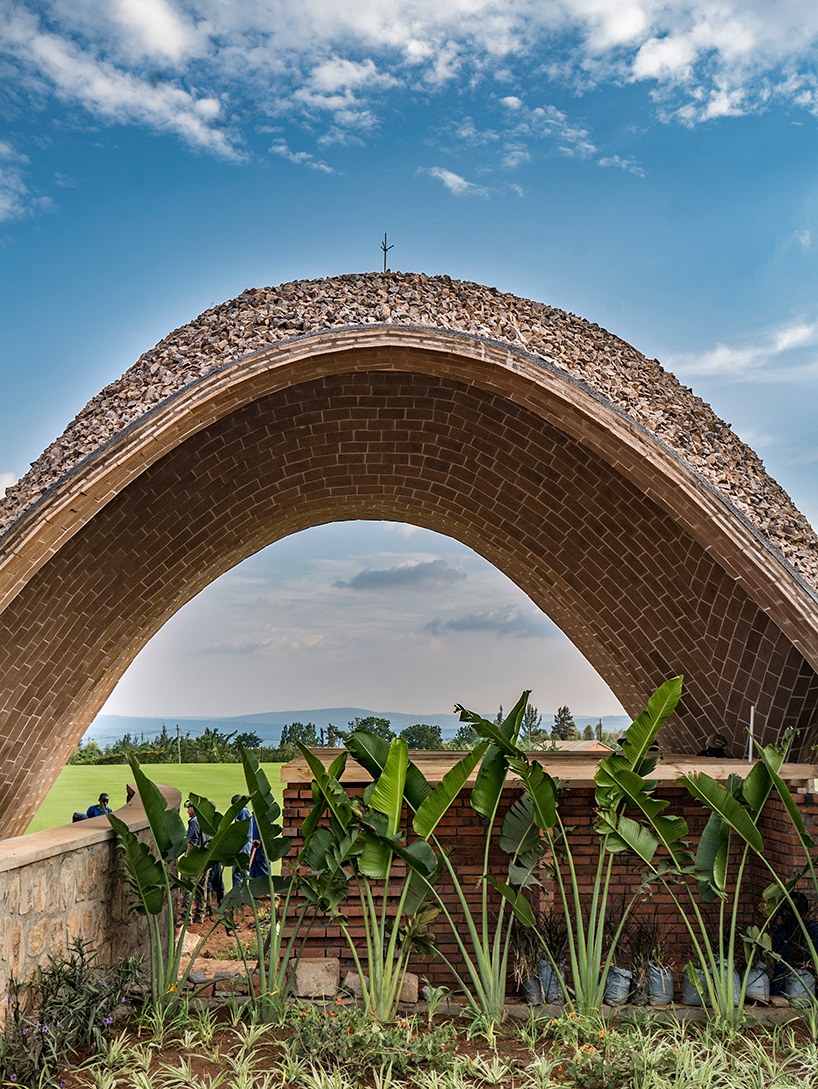
the roofline evokes the country’s undulating topography
image © light earth designs
ensuring that a maximum of waste material goes into primary production, the plywood rectangles used to press the tiles are reused as countertops, while timber and plywood from the vault guidework is made into joinery and doors. see designboom’s previous coverage of the project here, and take a look at our comprehensive archive of sports stadiums from around the world.
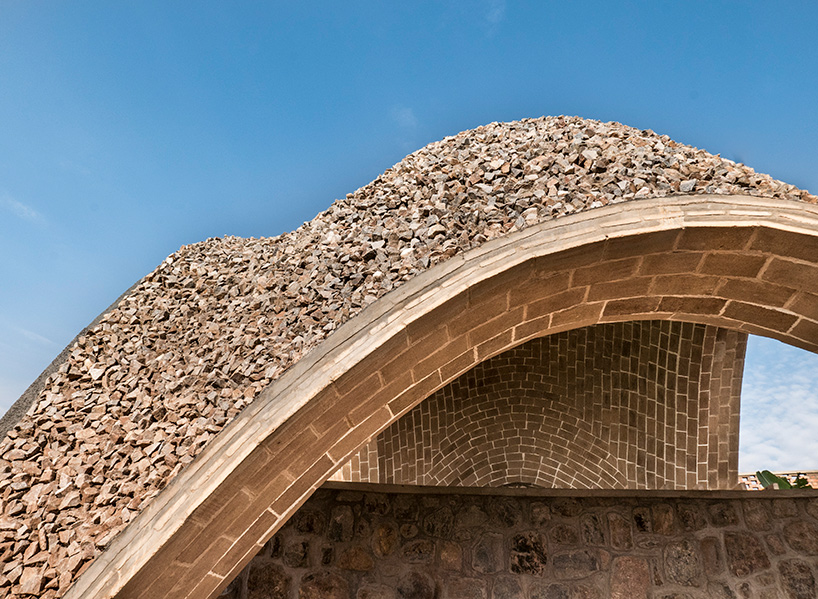
the masonry vaults are completely in compression
image © light earth designs
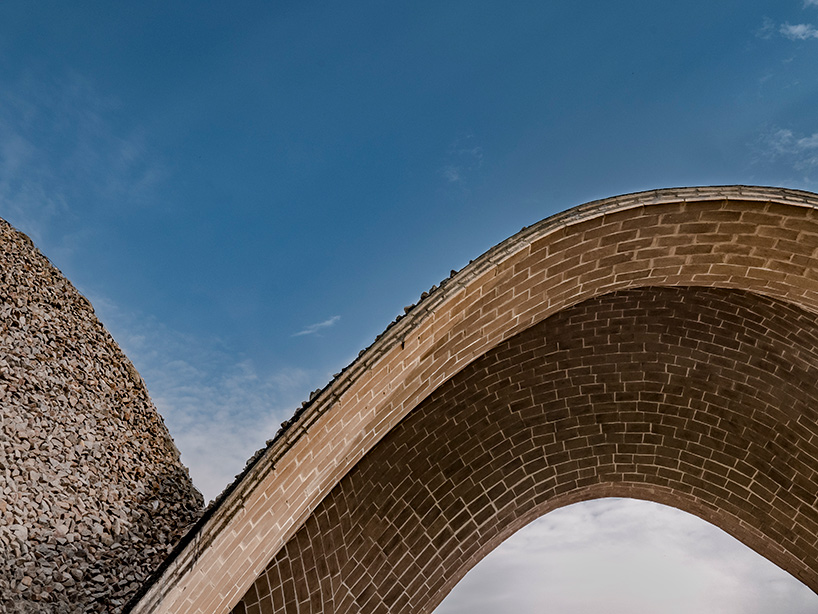
the shells topped with locally sourced broken granite that adds both weight and stability
image © light earth designs
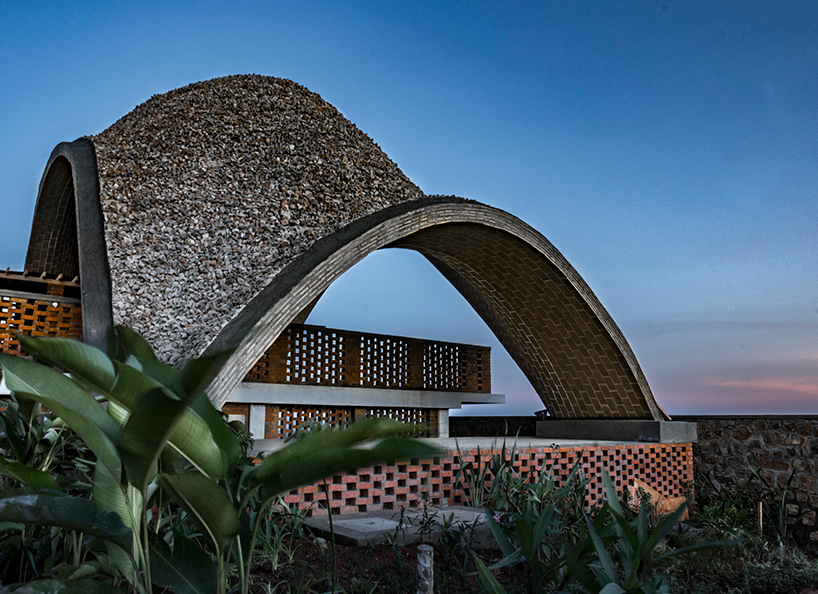
low carbon bricks are used to delineate space
image © light earth designs
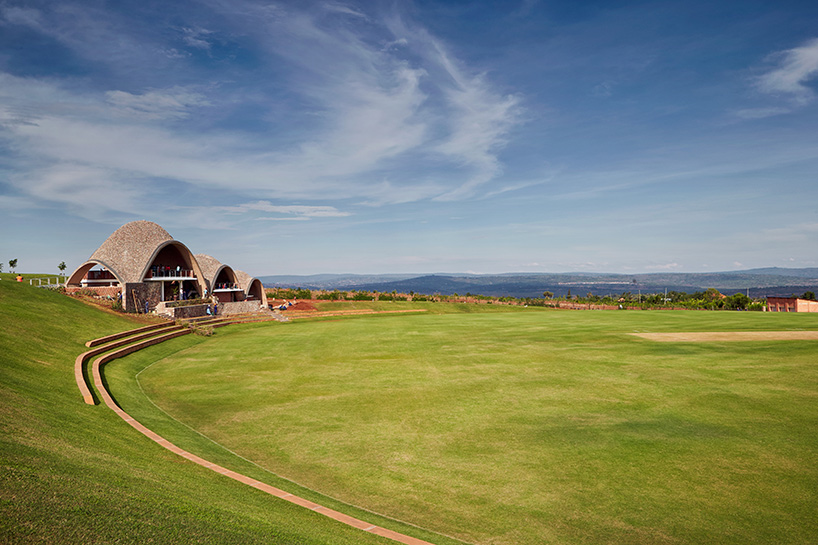
open mezzanines enjoy panoramic views over the pitch
image © jonathan gregson
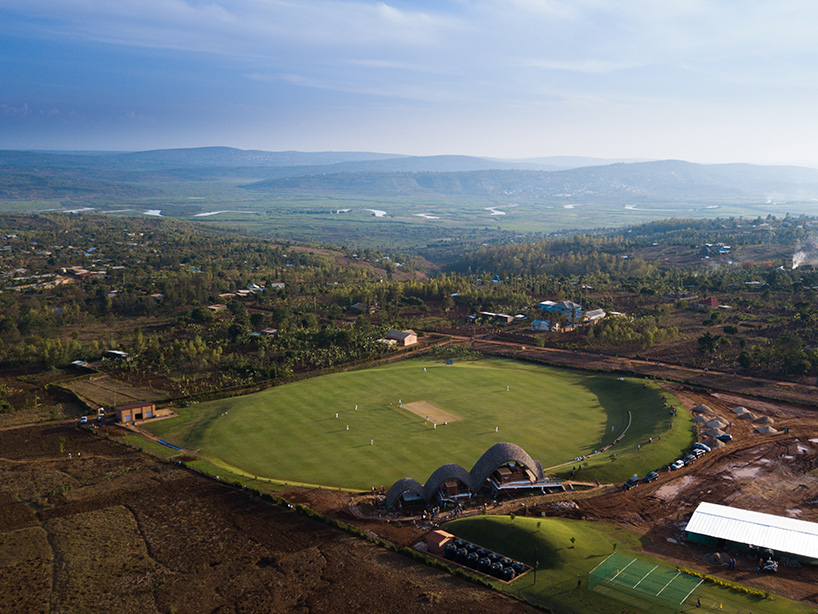
an aerial view of the site in gahanga, kigali, rwanda
image © paul broadie












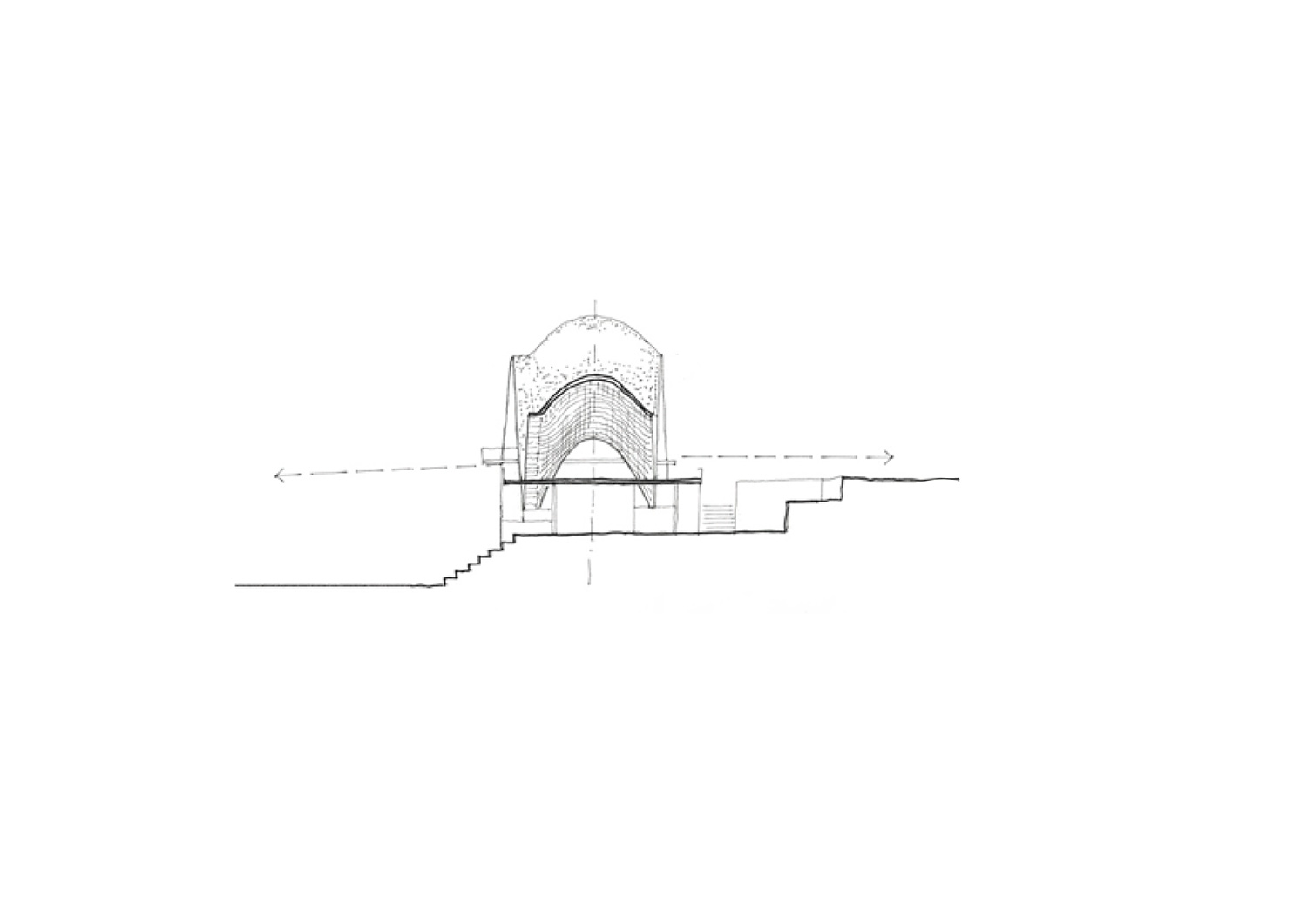
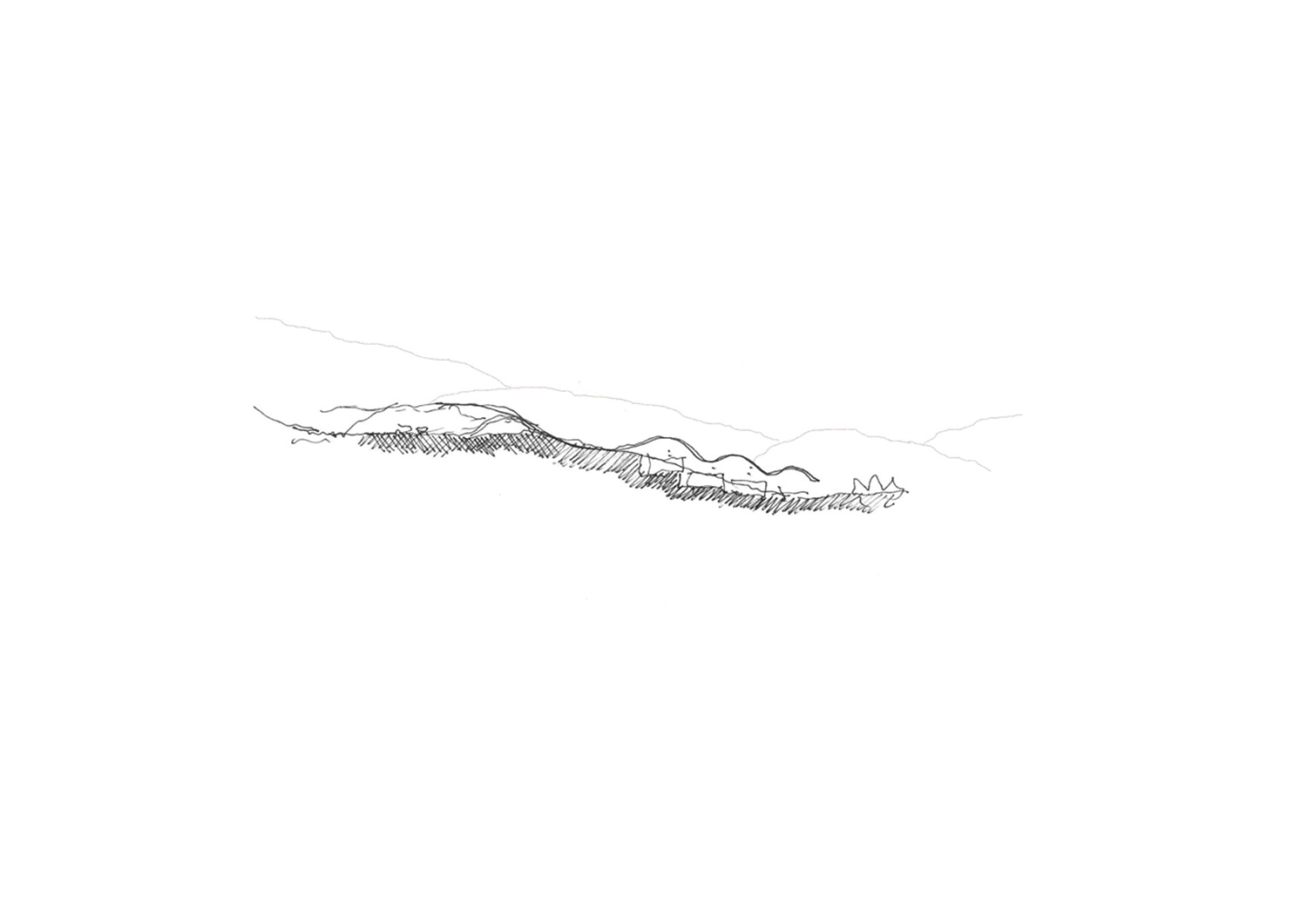
project info:
light earth designs team —
partner and lead: tim hall
partner and vaulting lead: michael ramage
project lead architectural engineer; on site lead: ana gatóo
project architect at tender and architect: ben veyrac
formwork design: wesam al asali
architect: anton larsen
architectural technician: marco groenstege
engineering support: oliver hudson
project inception architect: killian doherty
project location: gahanga, kigali, rwanda
completion year: 2017
gross built area (square meters or square foot): 650 sqm
photography credits: light earth designs, paul broadie, johnathan gregson
other participants —
roko construction, kigali, rwanda
james bellamy, vault specialist
structural, civils and M&E – FBW ltd, rwanda and uganda
